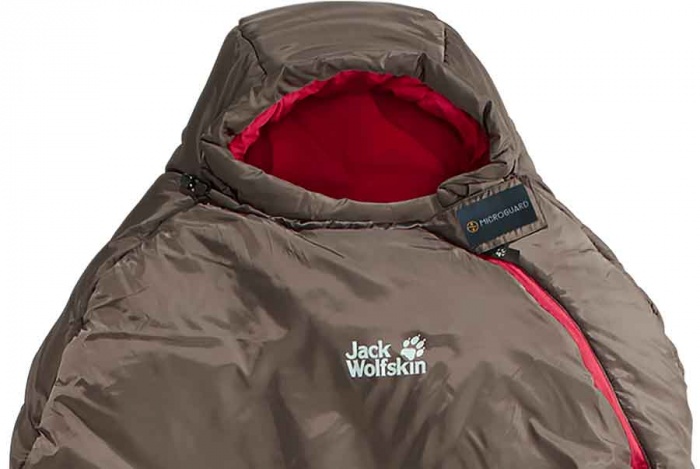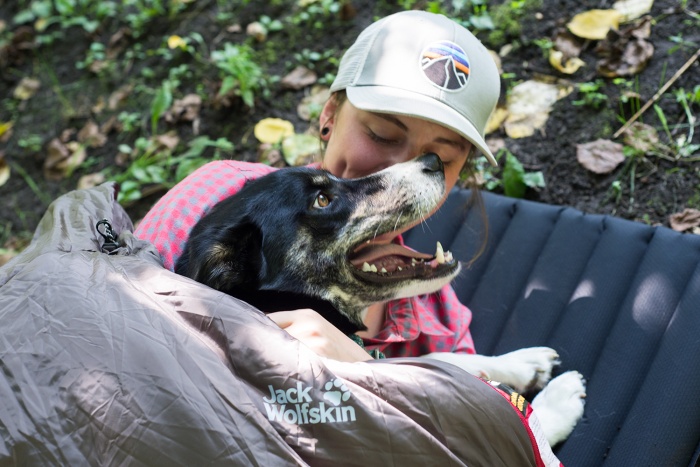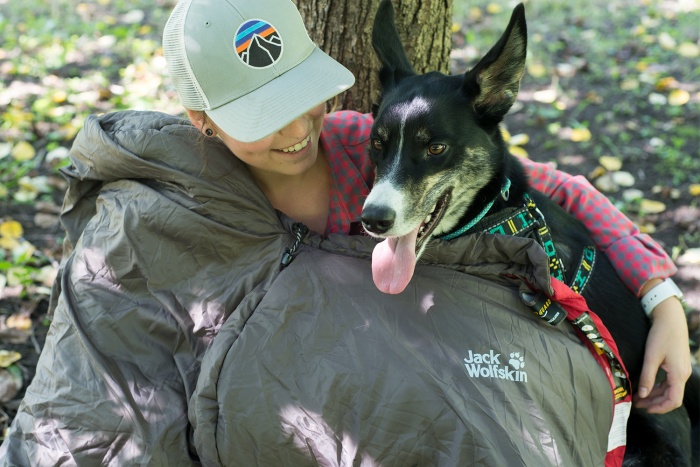You don’t need an armada of down to fit every micro-climate. Here are some tips to help extend your sleeping bag’s effective range and to stay warm (or cool) while camping in every season.

Most campers have a sleeping bag, maybe even two. Dedicated campers sleep outdoors in every season. But let’s be real; sleeping bags are expensive! So what’s a camper with a limited budget to do? We’ve got you covered with some suggestions.
The Science Behind Staying Warm
Let’s take a walk down the hallowed halls of science for a quick lesson in—wait for it—biophysics. To help guide us, we reached out to University of Oregon’s Department of Human Physiology professor, Dr. Christopher Minson.
Minson helps lead Oregon’s Exercise and Environmental Physiology Lab. Behind his name is a string of heat-related specialties. In short, Minson is keenly interested in how the body maintains a steady temperature through a variety of environments. Exactly the guy we needed to speak with.
“In simple terms,” shared Minson, “we stay warm by balancing heat gain with heat loss. While sleeping, that really comes down to heat gain from metabolism, and heat loss, which can happen through conduction [heat loss from touching], convection [movement of air around us], and radiation [the bodies emission of heat].”
Think about that for a second. Our bodies are a fine-tuned machine, capable of pinning 98.6˚F while pushing pixels at the office, pushing BTU’s schlepping a pack, and while sawing zzz’s at night. It’s almost magic.
Minson continued “Our body temperature is highly regulated; it drops a bit in the evening, helping us to feel sleepy. To help us wake up, our body temperature elevates in the morning. In REM sleep, though, our body temperature drops a bit. People tend to wake up (or can’t fall asleep) when their skin temperature drops to 84º F or below [normally 88º to 93º F].”
To bring it back, it’s the job of a sleeping bag to regulate our body temperature while shielding us from the external environment. The best of the bunch insulate well, prevent cold spots, and allow moisture to move away from the body.
How To Stay Comfortable Sleeping Outdoors
A single, proper bag will meet the majority of your needs. But there are a few things you can do to squeeze some extra digits out of your bag’s dedicated range. If you already have a sleeping bag and are looking to use it in more temps, keep reading.
Sleeping Pad Is Key
There’s a saying that we don’t feel cold … we experience the loss of heat. And nothing moves precious heat away from the body more quickly than contact with a cold surface. It’s a losing battle. The best way to synthetically boost your chances of staying warm is to shield the transfer of heat with an insulated barrier.
Tent Choice
Convection is the transfer of heat energy through a current of air or water across an object’s surface. That chill we feel at the top of a hill on a blustery day? That’s convection. Don’t let heat spill away; you burned it, you earned it, protect it with a layer of still air. In simple terms: The colder the anticipated night, reach for a more protective shelter.
If you don’t have a tent yet, Jack Wolfskin has several options. For more info on what type of tent is right for you, take a look at our explainer on how to choose a tent.

Eat Right, Sleep Well
As the saying goes, you are what you eat. And nothing will stoke the metabolic fire faster than a good old fashioned warm meal. On cooler nights, eat a warm hearty meal before crawling in the sack. Fatty foods, like nuts, oils, and animal fat are harder to digest, and require more energy to break the fats down, the byproduct being heat. So consider trading fill for fuel.
Expedition climbers are known to take a swig of olive oil before bedding down. Minson recommends something more refined, like a cup of soup or warm milk.
Exercise Before Bed?
Yep. Get warmed up before you hop in the sack; a quick set of jumping jacks, sit ups or calisthenics can generate “just enough” body heat to warm the bag. Nothing too vigorous–you don’t want to break a sweat. Just enough to warm the muscles.
Add A Hot Water Bottle
The sleeping bag’s job is to trap radiated heat from our bodies. But it doesn’t have to be from our bodies…well, not always. While alpinists will chuck a pee bottle in their bags for extra warmth, you can fill your water bottles with boiled water. The end game is the same – heat will radiate from the bottle and warm your bag.
Snuggle Up
It may not be the comfiest, but warmth in numbers is a real thing. Share a bag with your furry friend or another person if you’re looking to cut weight, or are in very cold temps.
Wear A Hat (To Bed)
About 6 percent of the body’s surface volume is on the head. Paired with its abundant vasculature, the head is capable of spilling a lot of heat. Furthermore, the center of the nervous system, a cold head can trigger other parts of the body to feel cold, even if you’re wearing boots and mittens. So listen to your mother. Put a hat on!
Sleeping Bag Liner
These weigh a hand full of ounces, keep the bag clean, and boast an additional 5˚F.
Protect Your Sleeping Bag
Moisture is the body’s way of cooling down. Too much of it in the bag will greatly decrease your ability to stay warm. Be mindful of your bag; keep it away from tent walls. Use a pad to keep it off the ground. Don’t wear wet clothes to bed. Air your bag before packing it up. A dry bag is a warm bag.
Sleep In Clothing To Stay Warm
Extra clothes in the pack? Put them on. In general, wearing clean clothes to bed will keep the trail grime from soiling the bag. Don’t bulk up with lots of insulation. Wear clothing that lightly insulates but allows heat to pass into your bag, where it will be more effective. Consider bringing a dedicated pair of sleep socks and gloves.
Women, Aim For Extra Warmth
Women are at a slight physiologic disadvantage when it comes to staying warm. While women tend to have a higher percentage of body fat (which insulates the body), Minson explained “Women tend to have more capillaries in their skin, especially in their hands and feet, causing the very real sensation of cold hands and feet. Tied to their smaller body masses (equals a greater surface area to pull heat away from), and a lower metabolic rate… women may be more susceptible to their skin temperature dropping below 84º F.”
This, as you recall, makes it hard to fall asleep, stay asleep or get into REM sleep.
Tips For Cold Sleepers
Simple solution: Anyone who runs cold, should consider a warmer bag. If you know you run cold, compensate. Buy a bag that will serve the majority of your nights.

Hot Weather Camping
While the body has feeble abilities to wrestle with the cold (shivering), we have refined anatomical mechanisms to spill heat. Simply reverse the suggestions above and physics will take care of the rest. But some bags are designed to allow wider temperature range.
Quilts lay over the body. Two-way zippers allow you to kick out the feet and cool from below. Creatively designed insulation tubes allow you to shift down from below to on top. Bags can be designed with additional insulation to cold-sensitive regions.
Don’t Have a Bag Yet? Choose Your Lowest Camping Temperature
If you don’t have a sleeping bag yet, think about the trips you take. What’s the coldest temperature you’re willing to camp in? That’s your starting point! Buy a bag that will handle something a little colder than that temp. Often, the same bag will often come in several degree ratings. For example, the Smoozip offers ratings of 19°F, 23°, 37°, and 44° which gives you plenty of starting options.
Once you have your bag, use the tips above to stay warm or cool.
– This post is part of a series sponsored by Jack Wolfskin. See their Smoozip sleeping bag and other products here.










